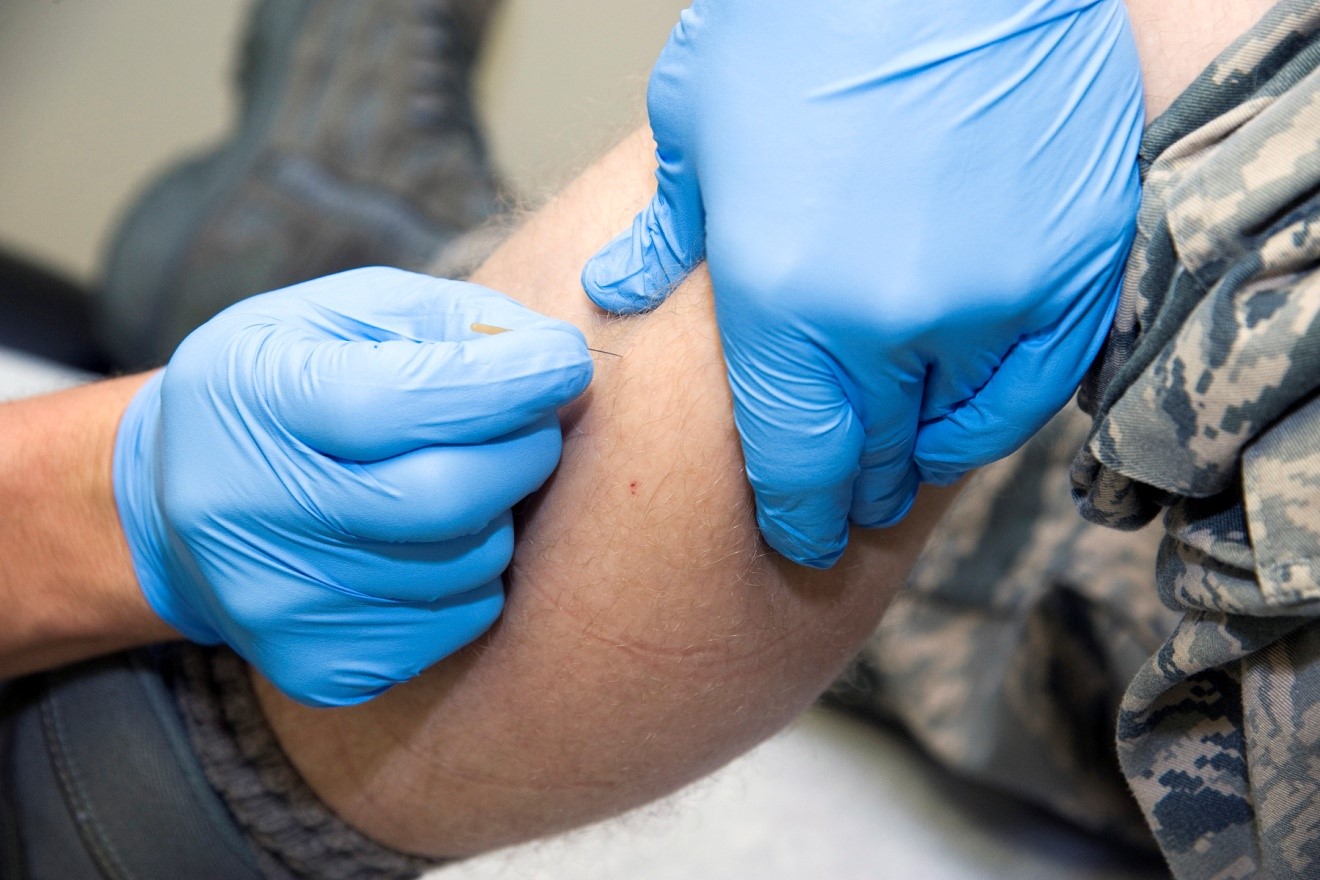
Dry needling for running injuries
If you’re a competitive runner, chances are you’ve already had at least one of the big three running injuries; plantar fasciitis, Achilles tendonitis and runner’s knee. Even if you’re a weekend warrior it’s likely you’ve suffered from at least one of the above and the other aches and injuries that inevitably come with running long distances over and over again. Those overuse injuries are rife amongst runners of all varieties and they’re getting worse each day you don’t deal with them.
Thankfully, the expert musculoskeletal physiotherapists at Lane Cove have added an extra string to their bow with advanced dry needling and trigger point training. The more physiotherapists and the medical community study dry needling, the further its benefits and use in the treatment of musculoskeletal injuries will be expanded. Dry needling has been shown to be effective in treating lower back pain[1], headaches[2], myofascial pain[3] and new studies are looking at its effectiveness on other muscle, tendon, ligament, and joint issues.
Dry needling is also proving to be an effective treatment for a number of injuries that runners are commonly on the receiving end of; shortening recovery periods and lowering pain in more than one injury type.
How do musculoskeletal physiotherapists know where to apply pressure?
Dry needling training focuses on expanding practitioners’ knowledge of skeletal and neuroanatomy systems. This knowledge allows musculoskeletal physiotherapists to identify the root cause of damaged and sensitive tissues, trigger points as well as release injured and overused tissues. Dry needle practitioners take every new client through an extensive physical examination that includes movement analysis, medical history, orthopaedic evaluation, and neurological (myotomal and dermatomal ) testing.
Common trigger points where runners experience pain
During rigorous physical exertion, new exercises, intense exercise and as a result of overtraining, muscle damage can occur on a microscopic level. Studies have proposed that this muscle damage causes an imbalance in the chemical makeup within the muscle fibers and this imbalance results in persistent muscle fiber contraction (trigger point) and taut band that can be a source of pain.[4] Runners also experience trigger points as:
- Pain/dysfunction in the thigh, groin, down the side of the leg, and back of the leg
- Pain/dysfunction in the groin, low back, and pubic area
- Pain/dysfunction in the thigh and knee
- Pain/dysfunction in the hamstring, back of the knee, and upper calf
- Pain/dysfunction in the calf, back of the knee, heel, and bottom of the foot
What running injuries is dry needling effective at treating?
Dry needling is designed to be an add-on therapy to compliment your physiotherapy program, it is not necessarily a cure-all on its own. For runners in particular you will probably find your physio will be working on observing and improving your hip and core strength, gait pattern and other biomechanical causes of your injury at the same time. That being said, dry needling has been shown to be effective at treating the following common running injuries:
- Plantar fasciitis
When the foot and calf muscles get tight they pull at the insertion of the muscles and fascia on the heel bone, causing inflammation and pain. Dry needling provided statistically significant reductions in plantar heel pain.[5] Dry needling is effective at treating plantar fasciitis partly by reducing tightness in the muscles that contribute to plantar fasciitis. It can also stimulate the injury signals in the brain designed to replace or repair the damaged tissue with new, healthy tissue
- Ankle Sprain
A 2015 study of proprioceptive/strength exercise on ankle sprain rehabilitation found that dry needling of the lateral lower leg peroneus muscle resulted in greater improvements in function and pain than the control group of just exercise[6]
- Lower back pain
According to researchers, dry needling that targets myofascial trigger points associated with lower back pain can disrupt the dysfunctional neuromuscular activity in the muscles, decrease muscle tone, and normalize the neurochemical pathways of muscles, leading to less pain and more effective recovery[7]
If you are suffering from pain due to running or sports, chances are you will find that dry needling is a safe and effective add-on treatment option. We offer dry needling as part of your treatment program, so if you are interested and would like to see how dry needling can help you, give us a call on (02) 9428 5772.
[1] Hu HT, Gao H, Ma RJ, Zhao XF, Tian HF, Li L. Is dry needling effective for low back pain?: A systematic review and PRISMA-compliant meta-analysis. Medicine (Baltimore). 2018;97(26):e11225.
[2] France, S., Bown, J., Nowosilskyj, M., Mott, M., Rand, S., & Walters, J. (2014). Evidence for the use of dry needling and physiotherapy in the management of cervicogenic or tension-type headache: A systematic review. Cephalalgia, 34(12), 994–1003.
[3] Fernández-de-Las-Peñas, César & Nijs, Jo. (2019). Trigger point dry needling for the treatment of myofascial pain syndrome: current perspectives within a pain neuroscience paradigm. Journal of Pain Research. Volume 12. 1899-1911. 10.2147/JPR.S154728.
[4] Gerwin RD, Dommerholt J, Shah JP. An Expansion of simons integrated hypothesis of trigger point formation. Current Pain and Headache Report. 2004, 8: 468-475.
[5] Cotchett MP, Landorf KB, Munteanu SE, Raspovic A. Effectiveness of trigger point dry needling for plantar heel pain: study protocol for a randomised controlled trial. J Foot Ankle Res. 2011;4:5. Published 2011 Jan 23. doi:10.1186/1757-1146-4-5
[6] Trigger Point Dry Needling and Proprioceptive Exercises for the Management of Chronic Ankle Instability: A Randomized Clinical Trial. http://dx.doi.org/10.1155/2015/790209
[7] Furlan, A. D., M. W. van Tulder, et al. (2005). “Acupuncture and dry-needling for low back pain.” Cochrane Database Syst Rev(1): CD001351.



